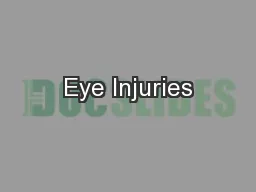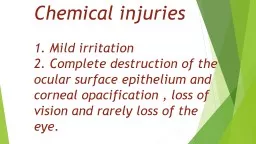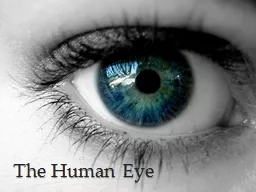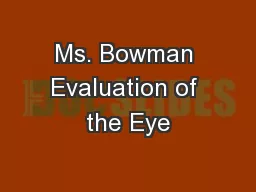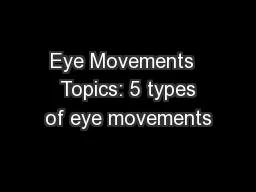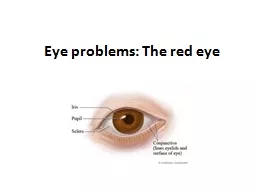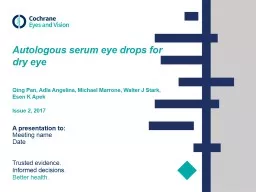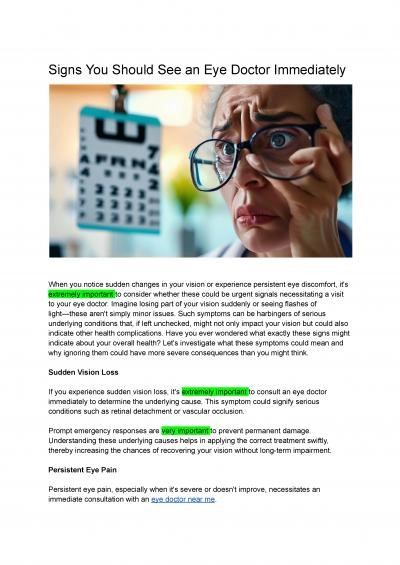PPT-Eye Injuries
Author : tawny-fly | Published Date : 2015-10-27
Chapter 25 Anatomy of the Eye Eye Injuries Can produce severe complications Examine pupil for shape and reaction if you can see it Appearance of Eye In a normal
Presentation Embed Code
Download Presentation
Download Presentation The PPT/PDF document "Eye Injuries" is the property of its rightful owner. Permission is granted to download and print the materials on this website for personal, non-commercial use only, and to display it on your personal computer provided you do not modify the materials and that you retain all copyright notices contained in the materials. By downloading content from our website, you accept the terms of this agreement.
Eye Injuries: Transcript
Download Rules Of Document
"Eye Injuries"The content belongs to its owner. You may download and print it for personal use, without modification, and keep all copyright notices. By downloading, you agree to these terms.
Related Documents

